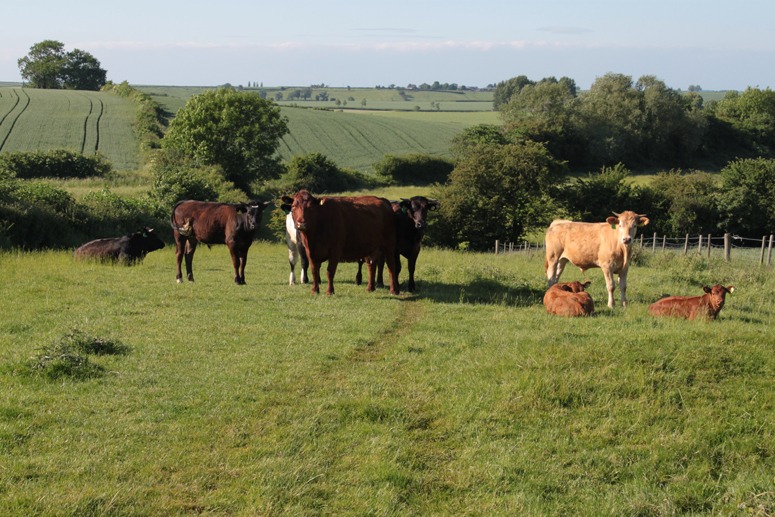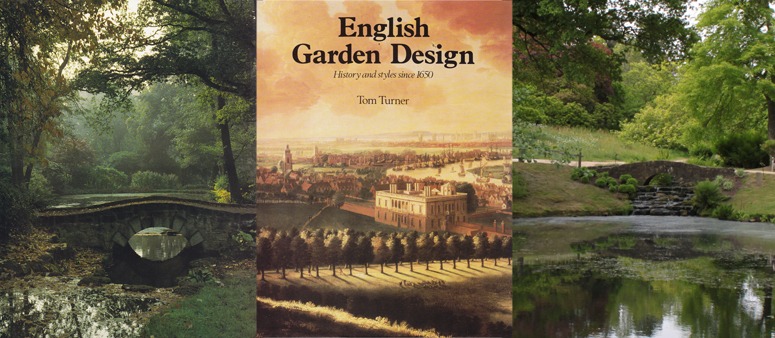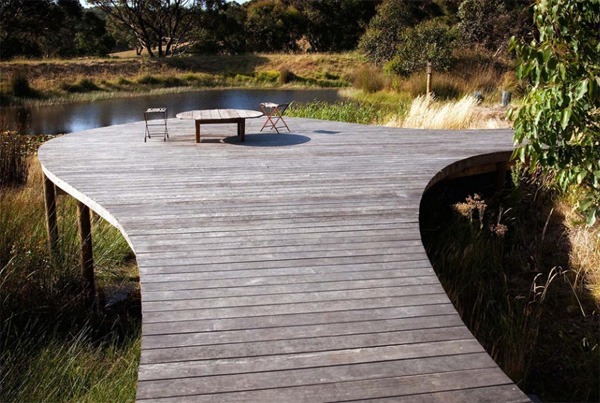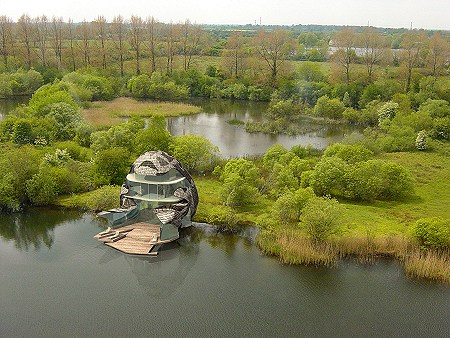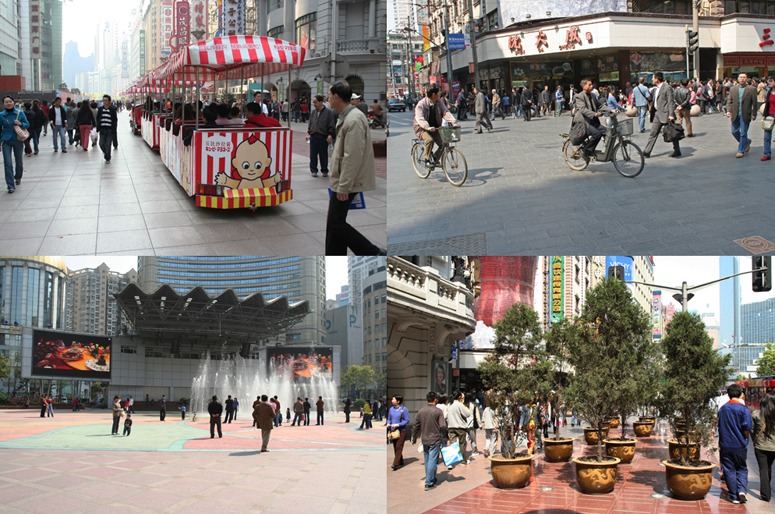Many scientists argue that ‘we’ should accept genetically modified (GM) foods – for a whole range of scientific and economic reasons. Though sceptical of the scientific logic I do not know enough about genetic modification to take issue with them. But on the economic issue I am convinced they are wrong in the specific case of the UK. So I was delighted to read that Professor Robert Watson, (chief scientist at the World Bank and also chief scientist of UK’s Department for Environment, Food and Rural Affairs) said: “Are transgenics the simple answer to hunger and poverty? I would argue, no.” A fortiori GM foods are not the answer for the UK. The benighted officials at the DEFFRA do not seem to appreciate the significance of the fact that England, Scotland and Wales are an island, or that our landscape is very productive and very beautiful. These geographical facts provide an amazing economic opportunity: Britain can become a niche supplier of the highest quality foods in the temperate world. If they are foolish enough, let everyone else go for low-cost, low-quality foods. It will not be possible to stop GM foods spreading across land borders. Island nations, like Britain and Australia, have the opportunity to become producers of exceptionally high quality foods. The UK should only produce organic foods. GM crops should be utterly banished. Everyone should know that buying British foods is a guarantee of quality. The benighted officials at DEFFRA should take note of the fact that in almost every market the producers who deliver the highest quality can charge the highest prices and, usually, generate the highest profits.
I love the English landscape and would be delighted to see photographs of wonderful crops and animals used, in beautiful surroundings, as marketing devices for The World’s Best Food.
PS Personally, I support the precautionary principle and have no wish to eat GM-produced Frankenstein Foods. But this is not my present argument.
Note: beyond the happy cattle in the above photograph one can see the remains of the last village in England which still uses the medieval system of land tenure. It is Laxton. I love it and the photograph was taken this week. Wouldn’t you rather your beef came from here than from a factory farm, awash with antibiotics? I was vegetarian between the ages of (about) 6 and 16. My father, who was a doctor, ridiculed me. But he went to visit a slaughterhouse about 40 years later and was revolted to see them cutting the abcesses out of factory-farmed cows and then sending the ‘good bits’ to the supermarkets. He then became a vegetarian.
Monthly Archives: June 2010
Is there too much of Kew Gardens at Wakehurst Place?
‘Father, forgive them, for they know exactly what they do’. (adapted from Luke 23:34). I have always liked Wakehurst Place and have put it on the dustjacket of a book – but I criticised Wakehurst Place last year and after another recent visit am being driven to conclude that it is being over-Kewed.
A plaque near the house is dedicated to ‘Sir Henry Price Bt. who in 1963 presented these lovely gardens for the education and enjoyment of all who visit them’. Two questions must be asked ‘Education in what?’ and ‘Enjoyment of what?’ The apparent aim is to convert a beautiful place into a spotty collection of specimens.
When Wakehurst Place first appeared on Gardenvisit.com, about 10 years ago, we received an anquished email along the lines ”Call us pigs or Pakis if you must but please PLEASE do not call us Gardenesque’. But why shouldn’t Wakehurst Place be a place for ‘education’ and ‘enjoyment’ related to the Gardenesque Style? Properly understood and executed, it is one of the most-English and most-appreciated styles of garden design. My recommendations for Wakehurst Place are:
– an Arts and Crafts area around the house
– a Gardenesque section at the head of the valley
– a full-scale Landscape transition to a Sublime lake at the foot of the valley
But as Geoffrey Jellicoe argued, Creative Conservation is often the best policy for historic gardens and landscapes. Should this be wanted, the garden managers could also consider
– seasonal and thematic ribbons interlacing the estate
But an even more important step would be to appoint a Design Manager for Wakehurst Place. If the manager’s skills are only horticultural then the future of gardens is to become more botanical, less Beautiful, less Picturesque, less Gardenesque and less Sublime. Let’s hope I’m wrong.
Note1: the above photographs of the bridge at the head of the valley are looking in opposite directions
Note2: by ‘over-Kewed’ I mean ‘too much of an emphasis on botany’ – Kew Gardens are in fact getting better looking year-by-year.
In search of Sustainable Gardens…
So what is the sustainable aesthetic about? I suggest a few characteristics might be common to the sustainable garden aesthetic:
* mimicking nature
* minimal interference with the landscape
* native plant selection
* eco-material selection ie timber and stone
* bushland settings
* curved lines
* low water, low chemical and low maintenance
* absence of paths, boundary fences and made roads
For a garden see: http://www.e-ga.com.au
For a plant aesthetic see: http://www.flickr.com/photos/42478440@N00/517961141
For an idea of how art & sustainability (green design) might have a more dramatic relationship also see the El Molino garden, a blend of formalism and naturalism http://www.anthonyexter.com/gardens/el_molino/2.php which possibly focuses on reduced resource use (water and energy) and plant selection , rather than a strictly natural aesthetic in the form, layout and background to the scheme.
So just what is sustainability?
Is it possible to sign a declaration to say your home is Sustainable and yet not truly have a sustainable property? Signing a declaration on the transfer of property is the approach that has been adopted in the residential sector in Queensland. The success of this approach depends on your definition of sustainability, and whether a number of ‘sustainability features’ are sufficient to warrant the label sustainable.
The community debate about the benefits of the legislative reforms has started. Some in the real estate industry have seized the initiative and have viewed ‘energy’ sustainability as a branding opportunity. This trend follow similar initiatives in the US.
However, what is being addressed here is ‘the below the line emissions’ on the McKinsey cost curve.
What is being missed?
Before airconditioning and heating, is passive solar design of the building envelope, before passive solar design of the envelope is the design of the garden, before the design of the garden is the orientation and siting building, before the orientation and siting of the building is the layout of the plan, before the layout of the plan is the analysis of the site, before the analysis of the site is the selection of the site, before the selection of the site is the design of the subdivision….
Sustainability as is demonstrated by Orchid House can be costly, so where does sustainability begin and end?
Image courtesy http://www.lmearchitecture.com/featherstone-house-images.htm
Shared space street landscape in Nanjing Road Shanghai 南京路
The segregation of pedestrians from vehicles, by sidewalk pavements, has a relatively short history in China – and so the Chinese may find sharing space easier than the Europeans. The west has sold the souls of its cities to engineers – who are less public spirited and more concerned with the welfare of their own professions than one might wish. That is how the streets of Europe became highways with pedestrians squashed onto sidewalks. Nanjing Road in Shanghai, to the casual visitor, is a fine example of shared space dominated by pedestrians. Points to note:
- the electric float for passenger transport – with a door for every seat loading and unloading is simple
- electric and human-powered bicycles are allowed to mingle with the pedestrians where other streets cross the shared space
- fountains overlooked by LCD screens make a lively piazza garden-type
- ceramic pots decorate the street scene
I can’t imagine that the ‘imaginative’ engineers who control London’s ‘shared’ streets (eg around Covent Garden) would permit these innovations. They would for example want fountains and screens to be in plaza, pots to be screwed down and electric vehicles to be enclosed busses.
Before the Japanese invasion (as “Nanking Road”) it was a place the European’s to ‘ride’ in their vehicles. It ran from the Bund (which is still the Bund) to Shanghai Race Course, which is now the People’s Park. I congratulate Shangai’s urban designers on the transformations. The Chinese word 路, usually translated as ‘road’ is comprised of the characters for ‘foot’ and ‘place’ – making it an appropiate cagetorization for this type of space. The English word ‘road’ derives from the very ‘to ride’ and is therefore less appropriate. The English word ‘street’ would be a better choice. It derives from the Latin strata, from the verb sternere “to lay down, spread out, pave”. I therefore suggesting changing the name to ‘Nanjing Street.’

